|
Feeding Management of Cattle and Buffalo
|
Commonly available feed ingredients for dairy animals |
Cereal grains |
Vegetable protein |
Milling by products |
Animal fat |
Vegetable fat |
|
|
|
|
|
|
|
|
|
|
|
|
|
|
|
|
|
|
|
|
|
|
|
|
|
|
|
|
|
|
|
|
|
|
|
|
|
|
|
|
|
| Maize or corn (Zea mays) |
|
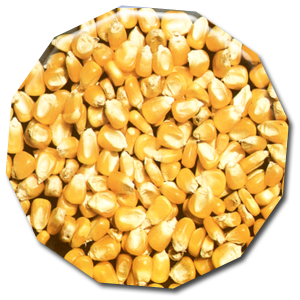 |
- Maize has high metabolisable energy value with low fibre content
- It has 8-13% of crude protein.
- It has high TDN of 85%
- Recently, new variety of maize (Floury 2) was produced with high methionine and lysine.
- Farm animals are fed with crushed maize.
- Flaked maize decreases the acetic acid to propionic acid proportion in rumen and hence depresses the butterfat content of milk.
- Improperly stored maize having higher moisture content are prone to aspergillus flavus infestation and produces aflatoxin.
|
| Bajra / Cumbu (Pennensetum typhoides) |
|
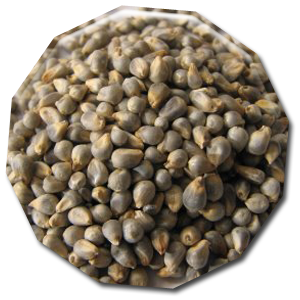 |
- Nutritive value of Bajra is similar to Sorghum
- They have 8-12% of crude protein and rich tannin content.
- Seeds are hard so it has to be ground or crushed before fed to cattle.
|
| Sorghum /Jowar / Milo (Sorghum vulgare) |
|
 |
- Sorghum is similar to maize in chemical composition.
- They have higher protein and low fat than maize.
- Cattle are fed with ground Sorghum.
|
|
| Rice (Oryza sativa) |
|
 |
- The crude protein and energy values are comparable to maize.
- It is widely used for human consumption.
- Based on the cost, it can be included in animal feed.
|
| Oats (Avena sativa) |
|
 |
- Oats has highest crude fibre of 12 - 16% with 7-15% of crude protein.
- Methionine, histidine and tryptophan are deficient in oats but abundant in glutamic acid.
- Cattles are fed with crushed or bruised oats.
|
| Barley (Hordeum vulgare) |
|
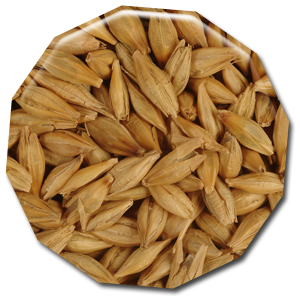 |
- Barley has high fibre content with 6-14% of crude protein
- It has low lysine and less than 2% of oil content.
- Barley is a main concentrate food for fattening animals in UK.
- Verity “Notch 2” developed at UK is rich in lysine.
|
| Wheat (Triticum aestivum) |
|
 |
- Wheat contains 6-12% of crude protein.
- The endosperm contains prolamin (gliadin) and glutelin (glutenin) protein mixture, which is referred as gluten.
- Strong gluten is preferred for bread making since it form dough, which traps the gasses, produced during yeast fermentation.
- Finely milled wheat is unpalatable to animals because it forms the pasty mass in the mouth and may lead to digestive upset.
- Do not feed finely ground wheat to farm animals.
|
| Groundnut oil cake |
|
|
- Groundnut oilcake is one of the best protein supplements for livestock feeding and is extensively used.
- Groundnut oil meal refers to solvent extracted residue and two grades (Grade I & grade II) are available in the market.
- Groundnut oilcake refers to expeller pressed and two varieties (Grade I & grade II) are available in the market.
- The common adulterant includes castor husk and Mahua oilcake.
- Groundnut oilcake has about 45% protein, which is deficient in cystein, methionine and lysine, but good source of Vitamin B12 and calcium.
|
 |
Aflatoxin affection
- In rainy season it is specifically labile to contain a toxic factor – Aflatoxins, a secondary metabolite of Aspergillus flavus.
- Mould spoilage and Aflatoxin production can occur at any stage from growing crop to the formulated feed or stored raw material.
- Aflatoxins are the most potent toxic, mutagenic, teratogenic and carcinogenic metabolities produced by the species of Aspergillus flavus and A.parasiticus on food and feed materials.
- Presence of oxygen, conducive temperature (10 – 40ºC) and high humidity favours the mould growth.
- High moisture in the crop, which harvested around wet period and also inadequately dried products, favours the fungal growth and toxin production.
- There are four Aflatoxins, B1, G1, B2 and G2 out which B1 is most toxic.
- The most common symptoms in the affected animals are liver damage with marked bile duct proliferation, liver necrosis and hepatic tumors while the other symptoms include gastritis and kidney dysfunction.
|
| Soybean meal |
|
- Soybean meal contains 44% proteins with all indispensable amino acids except cystein and methionine since the concentrations are sub optimal.
- It can be fed to all livestock up to 30% of the ration.
- The common adulterant includes castor husk and Mahua oilcake.
- Like other oil seeds, raw soybeans have number of toxic and inhibitory substances.
- These toxic, inhibitory substances and other factors in soybean like saponins can be inactivated by proper heat treatment during processing.
|
 |
| Sunflower oil cake |
|
- Sunflower oilcake contains 40% of protein with low lysine and twice the amount of methionine than soy protein.
- It has very short self-life.
- The expeller variety of Sunflower seed meal or cake has high content of polyunsaturated fatty acids, when fed in large amount to cows it makes butter soft.
- It can be fed to cattle ration up to 20% level.
- Sunflower oilcake is not recommended for calves.
|
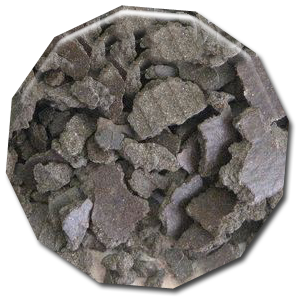 |
| Cotton seed meal |
|
- It has a good quality of protein but with low content of cystein, methionine and lysine.
- The calcium to phosphorous ratio is about 1:6, so calcium deficiency may occur.
- Lactating cows can be fed with cotton seed meal but when it was given large amount, milk may become hard and firm, so butter made from such milk fat is difficult churn and may also tend to develop tallow taints.
- Both decorticated cottonseed oilcake as well as undecorticated cottonseed oilcake are available in the market with two grades (Grade I & II) in each varity.
- Cottonseed meal contains 0.3-20g/kg dry matter of a yellow pigment known as Gossypol, a polyphenolic aldehyde.
- It is an antioxidant and polymerization inhibitor.
- It is toxic to simple stomached animals and the symptoms include depressed appetite, loss of weight and even lead to death due to cardiac failure.
- Gossypol toxicity can be reduced by the addition of calcium hydroxide and iron salts.
- Shearing effect of screw press in expeller process is an efficient gossypol inactivator.
|
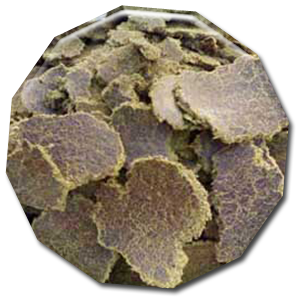 |
| Coconut meal |
|
- It contains 20-26% crude protein with low lysine and histidine content and 2.5-6.5% oil content.
- The higher oil meals tend to get rancid and may cause diarrhoea; hence low oil content meal should be preferred.
- It should be restricted to swine and poultry as it contains low protein and high fibre and low fibre coconut meal can be fed to monogastric animals with lysine and methionine supplements.
- Coconut meal produces firm milk fat that is most suitable for butter making.
|
 |
| Linseed meal |
|
- Linseed is rich protein source with low methionine and lysine content and also rich in phosphorous part of which is present as phytase but has only moderate calcium content.
- It is a high source of vitamins like riboflavin, nicotinamide, pantothenic acid and choline.
- It also has protective action against selenium poisoning.
- Linseed oil meal refers to solvent extracted residue and two grades (Grade I; grade II) are available in the market.
|
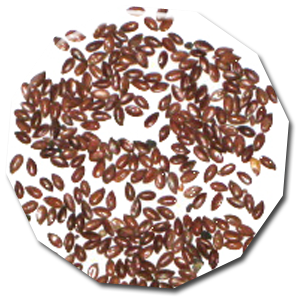 |
- Among the oilseed residues linseed is unique because it readily dispersible in water, forming a viscous slime due the presence of 3-10% of mucilage.
- Cyanogenetic glycoside, linamarin and an associated enzyme, linase in immature linseed hydrolyses it with the evolution of hydrocyanic acid.
- HCN is a potent respiratory inhibitor and hence, depending on the species the minimum lethal dose taken orally has been estimated as 0.5-3.5 mg/kg of body weight.
- Proper water washing, drying and storage can reduce glycosides in the feedstuffs.
- Linseed oilcake refers to expeller pressed and two verities (Grade I; grade II) are available in the market.
- Linseed oilcake/meal is a good food to ruminants.
|
| Mustard cake |
|
|
- It is widely used cattle feed in Northern India.
- Its nutritive value is lesser than groundnut cake.
- D.C.P and T.D.N values are 27% and 74 % respectively.
- It can be included up to 10% of the ration;
- It has rich calcium and phosphorous content of about 0.6% and 0.1% respectively.
|
 |
| Sesame seed meal / Gingelly oil cake / Til oil cake |
|
|
- It contains 40% protein, rich in leucine, arginine and methionine but low lysine.
- It was produced from the residues of sesame meal after removal of oil from sesame seed.
- There are three verities – red, black, white.
- White is of high nutritive value than red.
- It has high phytic acid.
- Sesame seed meal has laxative action and can be included in the cattle ration upto 15%.
|
 |
| Rice bran |
|
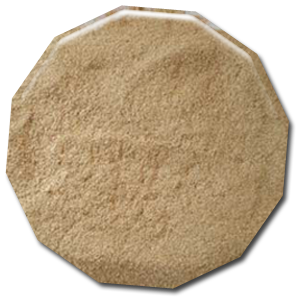 |
- It is the outer coarse coat of the rice grain separated during processing.
- Rice bran is a valuable product with 12-14% of protein and 11-18% oil mostly with unsaturated fatty acids and hence it becomes rancid rapidly.
- The oil removed rice bran is available as deoiled rice bran in market for livestock feeding.
|
| Wheat bran |
|
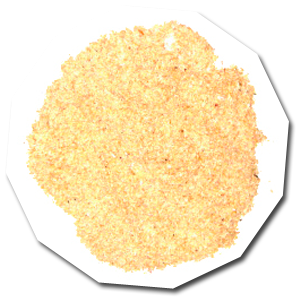 |
- Wheat bran is an excellent food with more fibre content.
- It is laxative when mashed with warm water but tends to counter act scouring when it was given dry.
- It is not commonly fed to pigs and poultry because of the fibrous nature and low digestibility.
|
| Polishing |
|
 |
- During rice polishing this by products accumulates which contains 10-15% protein, 12% fat and 3-4% crude fibre.
- It is rich in B- complex and good source of energy.
- Due to high fat content rancidity may occur.
|
| Molasses |
|
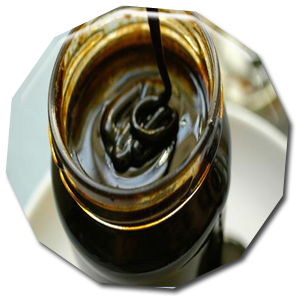

|
- It is a byproduct produced during juice / extract prepared from selected plant material.
- It is a concentrated water solution of sugars, hemicelluloses and minerals.
- Four varities of molasses are commonly available viz. cane molasses, beet molasses, citrus molasses and wood molasses.
- Cane molasses is a product of sugar industry and contains 3% protein with 10% ash.
- Beet molasses is a product during production of beet sugar and has higher protein (6%).
- Citrus molasses is bitter in taste with highest protein (14%) and produced when oranges or grapes are processed for juice.
- Wood molasses is a product of paper industry with 2% protein and palatable to cattle.
- Molasses is a good source of energy and an appetiser.
- It reduces dustiness in ration and is very useful as binder in pellet making.
- Molasses can be included upto 15% in cattle ration.
|
| Animal Fat |
Vegetable Fat |
Lard |
Tallow |
|
Corn oil |
Groundnut oil |
Sunflower Oil |
 |
 |
|
 |
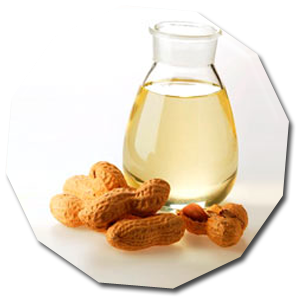 |
 |
- Fat (Vegetable/Animal) provides 2.25% more energy than carbohydrate or protein.
- Oil and fat reduces the dustiness in feed and lessens the wear on feed mixing equipments.
- Vegetable oil like corn oil, Groundnut oil, sunflower oil and animal fat like lard, tallow are extensively used in livestock feeding.
- Animal fat contains saturated as well as unsaturated fatty acids of C20, C22, and C24.
- Vegetable fats contain greater proportion of linoleic acid.
- Higher level of poly unsaturated fatty acids leads to rancidity and therefore anti oxidants like Butylated hydroxytoluene (BHT) or Ethoxyquin should be included in high fat diet.
|
|

- Feed alone constitute 60 per cent of the production cost of milk. Hence, feeding management play a vital role in farm economy.
- The nutrient requirement should be determined for maintenance as well as for milk production and to meet the fat percentage in milk and gestation.
- Based on the nutrient requirement ration should be computed.
- In general the dry matter from roughage should not exceed 2 per cent of cow’s live weight nor should it be less than 1 per cent
|
| Feeding dairy cow at different stages of lactation |
|
- Under practical feeding condition it is not possible to select much among the roughages or vary the ingredient in concentrate mix.
- The farm manger should carefully plan a cropping programme to ensure year round supply of mixture of leguminous and non leguminous forages.
- One feeding schedule based on thump rule is
| Stage of lactation |
Quantity of green grass to be give (kg) for animal weighing |
Concentrate ( kg) |
250 kg |
300 kg |
350 kg |
| Dry cow |
25 |
30 |
35 |
- For non-pregnant cows no concentrate is required.
- Pregnant cows should be fed additional quantity of 1.5 kg of concentrate from 7th month of gestation
- In case of dry cow, allowance up to 1 kg concentrate can be given if the condition of cow is poor or the fodder quality is inferior.
|
| Milch cow |
25 |
30 |
35 |
- 1.0 kg for every 2.5 kg of milk of average 4% fat percentage, in case of buffalo 1.0 kg for every 2.0 kg of milk produced.
|
|
| |
Early lactation |
- The recently calved high producing cow is unable to eat enough feed to support her milk production.
- This means that the cow should have enough reserve to store nutrient to be drawn to tide over the period of heavy demand in early lactation, during which period the cow loses weight.
|
| Challenge feeding |
|
- Challenge feeding means the cow with high milk production potential are to be fed increase quantity of concentrate to ‘challenge’ them to produce to the maximum.
- This starts two weeks before expected date of calving. This challenge feeding will condition her digestive system for the increased amount of concentrate and provide enough nutrients to initiate lactation on a higher plane.
- Two weeks before the expected date of calving start feeding 500 g of concentrate mixture.
- The quantity should be increased daily by 300-400 g until the cow is consuming 500-1000g concentrate for every 100 kg body weight.
- After calving, the concentrate allowance should be increased by 500 g per day in the first 2 weeks of lactation until the cow achieves peak yield somewhere in the second month of lactation on free choice basis.
- After this the milk yield is tested and the concentrate allowance is fixed accordingly.
Challenge feeding schedule:
| Period |
Concentrate allowance |
Last 2 weeks before calving |
Starting from 500g, increase 300 - 400g daily until the cow is eating 500 – 1000g per 100kg body weight. |
First 2 weeks of lactation |
Increase 500g per day to free choice level. |
Second week to peak yield (test day) |
Free choice |
From test day onwards |
According to production as per thumb rules. E.g. 1Kg for every 21/2 kg milk produced |
Remaining lactation |
Concentrate adjusted to monthly test of milk Production |
All periods |
Green fodder and dry fodder given adequately |
|
| |
Feeding during mid and late lactation |
- The nutrient deficit period of early lactation is followed by a relatively stable period during which the cow can consume enough feed to meet the various demands for nutrients and the body weight of the cow remains more or less stable.
- During this period the cow maybe fed a well balanced ration of god quality fodder and concentrate according to the milk yield and fat percentage of milk.
- During the late lactation, intake ability of the cow exceeds nutrient needs. This is the time when the cow starts needing extra allowance for the growing foetus.
- This is also the period when the cow can readily replenish the already depleted body reserve and gain weight very fast.
- From 7 ½ month to 10 months of lactation, cow may be fed 1-2 kg concentrate feed in addition to their nutrient requirement for maintenance and milk production to replenish the condition lost in early lactation.
|
| Feeding high producing dairy cows |
|
- High producing dairy cow should eat a large volume of nutrient daily to sustain th milk production at that level.
- This is simply not possible with bulky forages alone due to physical limitation of volume intake (space in the rumen).
- If high level of concentrate is fed it may change the microbial and chemical atmosphere of the rumen and cause dysfunction.
- Rumen fermentation can be controlled by a) composition of ration b) ratio of ingredients in the ration c) quantity of feed supplied d) frequency of feeding and e) physical form of feed.
- For a high producer the forage fed should of superior quality which also reduces the quantity of concentrate required.
- Crude fibre is very important in the ration of milking cow because it is well known that rumen fermentation leading to acetic acid production is dependent on the percentage of cellulose in the ration.
- Cows need acetic acid for maintaining normal milk fat percentage as well as total milk production.
- Ruminant ration should contain a minimum of 20-25 per cent crude fibre.
- Higher percentage of grain in the ration reduce cellulose digestibility and cause disturbances like depressed milk fat, depressed milk production and in extreme cases damage to the rumen wall, development of acidosis and death.
- Frequency of feeding: dividing the daily ration into 3 or 4 parts and feeding them in so many installments has been found to be useful in overcoming this problem.
- This also results in greater digestibility and better utilization of protein apart from preventing explosive release of acids.
- A high concentrate ration induces less amount of saliva flow compared to roughages.
- But when feed is given in 4 or 5 installments the proportion of Na and K salts in rumen return to normal.
lactation.
|
|

- Feed alone constitute 60 per cent of the production cost of milk. Hence, feeding management play a vital role in farm economy.
- The nutrient requirement should be determined for maintenance as well as for milk production and to meet the fat percentage in milk and gestation.
- Based on the nutrient requirement ration should be computed.
- In general the dry matter from roughage should not exceed 2 per cent of cow’s live weight nor should it be less than 1 per cent
|
| |
Mixing of concentrates and roughages |
- Traditionally, concentrate are fed at the time of milking. Roughages re offered either before or after milking.
- In high producers, when concentrates are fed in heavy doses at milking time, the appetite of the cows will be reduced temporarily and they may not eat roughages for some time.
- Consequent, there will be 4 different fermentation, two primarily due to concentrate and two primarily of roughages.
- The feeding of concentrates separately from roughages during a four time feeding schedule reduces acidic acid production and increases propionic acid.
- It has been observed that feeding grain on top of silage increased the fat percentage of milk production.
- Feeding concentrates either on top of forages or mixed with forages has been four to favour optimum rumen fermentation.
- This has led to the concept of complete feeds which incorporates both roughages and concentrates.
|
| Complete feeding |
|
- In order to simplify feeding of dairy cows complete diet system have been introduced.
- Complete diet is an intimate mixture of concentrate and roughages in a desired proportion processed in such a way as to preclude selective eating. It forms the sole source of food for the cow.
- It reduces labour requirement and keeps a tighter control on the cow’s nutrition.
- It also facilitates the application of least cost method of ration formulation.
- Feeding of complete diet ad libitum to dairy cow has been found to be advantageous in that it increases feed intake, preserve milk quality as result in better utilization of nitrogen.
- These are in addition to the most obvious advantage of prevention acidosis from over-eating of concentrate by high producer.
- The complete diet feeding system is radically different from conventional feeding method in that there is no individual approach in feeding cows.
- Group feeding is practiced in complete feeding system. There are also fewer changes in diet formulation according to the milk yield.
- This has come as a result of the experimental and practical feeding observation that yield and efficiency are not improved by individual rationing compared to flat rate feeding of cows grouped according to milk yield or stage of lactation.
|
|

| Recommended Nutrient inclusions for Cattle and Buffaloes |
Major minerals |
Micro minerals |
Vitamins |
|
Iron |
Vitamin A |
Phosphorus |
Copper |
Vitamin D |
Magnesium |
Zinc |
Vitamin E |
Sodium |
|
Vitamin K |
Pottasium |
Cobalt |
Vitamin C |
Chlorine |
Selenium |
|
|
Thyroid |
|
|
|
|
|
| Calcium |
|
Role of Calcium
- 99% of the calcium in the body is present in the bones and teeth.
- Calcium controls the excitability of nerves and muscles.
- Calcium is required for normal clotting of blood.
- Calcium is necessary for activation of enzymes like trypsin, adenosine triphosphatase.
Clinical signs
- In young animals calcium deficiency causes rickets, characterised by misshapen bones, enlargement of the joints, lameness and stiffness.
- In adult animals calcium deficiencies produces Osteomalacia, characterised by weak bones, fragile and are easily broken.
- Enlargement of the osteochondral joints in the ribs produces a condition called as Rickety Rosary.
- Pigeon chested appearance is a symptom due to enlargement of sternum.
- Milk fever (parturient paresis) is a condition in dairy cows shortly after calving, is characterized by a lowering of the serum calcium level, muscular spasms, and in extreme case paralysis and unconsciousness.
Supplementation
- Ground limestone
- Steamed bone meal
- Dicalcium phosphate and
- Green leafy crops, especially legumes, are good sources of calcium.
|
| Phosphorus |
|
Role of Phosphorus
- Phosphorus occurs in close association with calcium in bone.
- Phosphorus plays a vital role in energy metabolism in the formation of sugar-phosphates and adenosine di- and triphosphates. ( ADP & ATP)
- Phosphorus plays a key role in metabolic reaction of carbohydrate, protein and lipids which occurs through phosphorylated intermediate compounds.
- Phosphorus is the component of phospholipids, which are important in lipid transport and metabolism as constituent of cell membranes.
- Phosphorus is constituent of RNA and DNA.
- Phosphorus is a component of many enzyme systems.
Clinical signs
- In young animals phosphorus deficiency causes rickets, characterised by misshapen bones, enlargement of the joints, lameness and stiffness.
- In adult animals phosphorus deficiencies produces Osteomalacia, characterised by weak bones, fragile and are easily broken.
- Enlargement of the osteochondral joints in the ribs produces a condition called as Rickety Rosary.
- Pigeon chested appearance is a symptom due to enlargement of sternum.
- 'Pica' or depraved appetite has been noted in cattle when there is a deficiency of phosphorus in their diet; the affected animals have abnormal appetites and chew wood, bones, rags and other foreign materials.
- In chronic phosphorus deficiency animals may have stiff joints and muscular weakness.
- Low dietary intakes of phosphorus have also been associated with poor fertility, apparent dysfunction of the ovaries causing inhibition or depression and irregularity of oestrus.
Supplementation
- Cereal grains,
- Fish meal and
- Meat products
|
| Magnesium |
|
- Magnesium is closely associated with calcium and phosphorus.
- Essential constituent of bone and teeth.
- Magnesium is the commonest enzyme activator.
- Magnesium plays a role in oxidative phosphorylation leading to ATP formation
- Magnesium is necessary in metabolism of carbohydrate, lipids and in the biosynthesis of proteins.
Clinical signs
- In adult ruminants low blood levels of magnesium (hypomagnesaemia) causes a condition known as hypomagnesaemic tetany /magnesium tetany /lactation tetany / grass staggers.
- It is characterized by nervousness, tremors, twitching of the facial muscles, staggering gait and convulsions.
Supplementation
- Wheat bran
- Dried yeast
- Cottonseed cake
- Linseed cake
- The mineral supplement most frequently used is magnesium oxide, which is sold commercially as calcined magnesite.
|
| Sodium |
|
- It regulates acid base equilibrium of the body.
- It maintains osmotic pressure.
- Control water metabolism in the tissue.
- Essential for the operation of enzyme systems.
- Neural and muscular conduction and transmission.
- Sodium is the main cation of extracellular fluids.
- Stored largely in body fluids and soft tissues.
Clinical signs
- A deficiency of sodium in the diet leads to a lowering of the osmotic pressure, which results in dehydration of the body.
- Symptoms of sodium deficiency include poor growth and reduced utilization of digested proteins and energy.
|
| Pottasium |
|
- It regulates acid base equilibrium of the body.
- They maintain osmotic pressure.
- Control water metabolism in the tissue.
- Essential for the operation of enzyme systems.
- Neural and muscular conduction and transmission.
- Potassium is the main cation of intracellular fluid.
- Stored largely in body fluids and soft tissues.
Clinical signs
- Diets low in potassium induces retarded growth
- Weakness and
- Tetany, followed by death.
|
| Chlorine |
|
- It regulates acid base equilibrium of the body.
- They maintain osmotic pressure
- Control water metabolism in the tissue.
- Essential for the operation of enzyme systems.
- Neural and muscular conduction and transmission.
- Chlorine plays an important part in the gastric secretion, where it occurs as hydrochloric acid as well as chloride salts.
- Stored largely in body fluids and soft tissues.
Deficiency
- A dietary deficiency of chlorine leads to an abnormal increase of the alkali reserve of the blood (alkalosis).
Excesss
- Excess of sodium chloride in the diet leads to salt toxicity.
- It is characterized by excessive thirst, muscular weakness and oedema.
|

| Iron |
|
Role of Iron
- More than 90 per cent of the iron in the body is combined with proteins, the most important being haemoglobin and myoglobin.
- Iron also occurs in blood serum in a protein called transferrin, which is concerned with the transport of iron from one part of the body to another.
- Ferritin, is a protein containing iron, is present in the spleen, liver, kidney and bone marrow and provides a form of storage for iron.
- Haemosiderin is another storage form of iron.
- Iron has a major role in many of biochemical reactions, particularly in connection with enzymes of the electron transport chain (cytochromes).
- Electrons are transported by the oxidation and reduction activity of bound iron.
- Enzymes containing or activated by iron are catalase, peroxidases, phenylalanine hydroxylase and all the tricarboxylic acid cycle enzymes.
Clinical signs
- Anaemia due to iron deficiency occurs most commonly in rapidly growing suckling animals, since the iron content of milk is usually very low.
- Iron deficiency anaemia is not common in calves because in practice it is unusual to restrict them to a milk diet without supplementary feeding.
Supplementation
- Legume and oil seed meal
- Cereals straw and bran
- Ferrous sulphate salts and
- iron dextran
|
| Copper |
|
Role of Copper
- Copper is the integral component of enzymes namey Ceruloplasmin (ferrooxidase), Erythrocuprein, Cytochrome oxidase, Lysyl oxidase, Tyrosinase.
- Copper is the integral component Turacin, a pigment of feathers.
- Copper is required for maintenance of crimp of wool.
Deficiency
- A deficiency of copper impairs the animal's ability to absorb iron leads to anemia
- Poor growth
- Bone disorders.
- Scouring, gastro-intestinal disturbances
- Infertility,
- Depigmentation of hair and wool,
- Lesions in the brain stem and spinal cord. The lesions are associated with muscular inco-ordination, and occur especially in young lambs - swayback condition also known as 'enzootic ataxia' or neonatal ataxia.
- The signs range from complete paralysis of the newborn lamb to a swaying staggering gait, which affects, in particular, the hind limbs.
- Loss of 'crimp' in wool - 'stringy' or 'steely' wool
- 'falling disease' – sudden death due to rupture of major blood vessels
- Copper deficiency also leads to reproductive problems in cattle.
Excess
- Continuous ingestion of copper in excess of nutritional requirements leads to an accumulation of the element in the body tissues, especially in the liver. Hence copper can be regarded as a cumulative poison.
- Chronic copper poisoning results in necrosis of the liver cells,
- Jaundice,
- Loss of appetite and
- Death from hepatic coma.
Source
- Seeds and seed by-products
- Application of copper containing fertilizer to lands
- Provision of copper containing salt licks
- Ingestion of organic complexes of Copper
|
| Zinc |
|
Role of Zinc
- A high concentration of zinc is present in the skin, hair and wool of animals.
- Several enzymes in the animal body are known to contain zinc; these include carbonic anhydrase, pancreatic carboxypeptidase, lactate dehydrogenase, alcohol dehydrogenase, alkaline phosphatase and thymidine kinase.
- In addition zinc is an activator of several enzyme systems
Clinical signs
- Deficiency of Zinc causes subnormal growth, depressed appetite, poor feed conversion and leads to reproductive disorders in farm animals.
- Symptoms of zinc deficiency, in calves include inflammation of the nose and mouth, stiffness of the joints, swollen feet and parakeratosis characterized by Reddening of the skin followed by eruptions, which develop, into scabs.
Requirement
- Cattle require 30 mg/ kg of feed.
Source
- Yeast
- Bran and germ of cereal grains.
- Animal protein by-products such as meat meal and fishmeal are usually richer sources of the element than plant protein supplements.
|

| Manganese |
|
Role of Manganese
- An activator of many enzymes such as hydrolases and kinases.
- As a constituent of enzymes such as arginase, pyruvate carboxylase and manganese superoxide dismutase.
- Manganese through its activation of glycosyl transferases is required for the formation of the mucopolysaccharide which forms the organic matrix of bone.
- Manganese containing Superoxide dismutase catalyses the reactions that promote immunity in animals.
Clinical signs
- Deficiency of Manganese causes retarded growth, skeletal abnormalities and ataxia of the newborn and reproductive failure.
- Low manganese diets for cows leads to depress or delay oestrus and conception, and to increase abortion.
Requirement
Source
- Bran and wheat bran, offals.
- Most green foods contain adequate amounts.
- Manganese Salts: Oxide, chloride, carbonate
|
| Cobalt |
|
Role of Cobalt
- Cobalt is required by microorganisms in the rumen for the synthesis of vitamin B12.
- Cobalt acts as an activating ion in certain enzyme reactions.
Clinical signs
- Cobalt deficiency causes vitamin B 12 deficiency in ruminants.
- Wasting disease or coast disease or Pining or Enzootic marasmus characterized by decreased feed intake, emaciation, loss of body weight due to wasting of skeletal muscles, decreased growth rate and fatty degeneration of liver.
Requirement
- 0.07 ppm in the DM – for dairy cattle
Source
- salt licks
- mineral mixtures or
- By placing cobalt oxide bullet in the ventral sac of rumen using a cobalt gun pellets.
|
| Selenium |
|
Role of Selenium
- Selenium is a component of gluthathione peroxidase, an enzyme, protecting cell membrances from oxidative damage.
- Selenium has a sparing effect on vitamin E by ensuring normal absorption of the vitamin.
- Selenium also reduces the amount of vitamin E required to maintain the integrity of lipid membranes and aids the retention of Vitamin E in plasma.
Clinical signs
- The most frequent and the most important manifestation of Selenium deficiency in farm animals is muscle degeneration (myopathy).
- Nutritional myopathy, also known as muscular dystrophy, frequently occurs in cattle, particularly calves.
- The myopathy primarily affects the skeletal muscles and the affected animals have weak leg muscles, a condition manifested by difficulty in standing and after standing, a trembling and staggering gait. The animals are unable to rise and weakness of the neck muscles prevents them from raising their heads. This condition known as white muscle disease.
- The heart muscle may also be affected and death may result.
Selenium toxicity
- Animals grazing chronically some species of plants (Astragalus racemosa) that grow in seleniferous areas contain very high levels of selenium named as Alkali disease and blind staggers.
- Symptoms include dullness, stiffness of the joints, loss of hair from mane or tail and hoof deformities.
- Acute poisoning, which results in death from respiratory failure, can arise from sudden exposure to high selenium intakes.
|
| Thyroid |
|
Role of Thyroid
- Iodine plays an important role in the synthesis of the two hormones, triiodothyronine and tetraiodothyronine (thyroxine) produced in the thyroid gland.
- The thyroid hormones accelerate reactions in most organs and tissues in the body, thus increasing the basal metabolic rate, accelerating growth, and increasing the oxygen consumption of the whole organism.
Clinical signs
- The main indication of deficiency is an enlargement of the thyroid gland, termed endemic goitre, and is caused by compensatory hypertrophy of the gland.
- The thyroid being situated in the neck, the deficiency condition in farm animals manifests itself as a swelling of the neck, 'big neck'.
- Reproductive abnormalities are one of the most outstanding consequences of reduced thyroid function; breeding animals deficient in iodine give birth to hairless, weak or dead young.
Requirement
- Cattle 400- 800 micro gram /day
Supplementation
- The richest sources of this element are foods of marine origin like seaweeds, fish meal etc.
- In areas where goiter is endemic, precautions are generally taken by supplementing the diet with the element, usually in the form of iodized salt.
|
| Fluorine |
|
Excess - Clinical signs
- Fluorine is a very toxic element, with ruminants being more susceptible, causes a condition called as flurosis.
- There is dental pitting and wear, leading to exposed pulp cavities.
- Further increases in fluorine cause depression of appetite, lameness and reduced production.
- Bone and joint abnormalities also occur, probably owing to ingested fluorine being deposited in the bone crystal lattice as calcium fluoride.
- The commonest sources of danger from this element are
- Fluoride-containing water,
- Herbage contaminated by dust from industrial pollution and
- The use of soft or raw rock phosphate supplements.
|

| Vitamin A |
|
Role of Vitamin A
- Synthesis of glycoprotein to maintain integrity of epithelial cells.
- In bone formation synthesis of mucopolysacharides.
- Synthesis of the visual pigment Rhodopsin.
- Retinol and retinoic acid (RA) are essential for embryonic development during fetal development.
Clinical signs
- Inadequate retinol available to the retina results in impaired dark adaptation, known as "night blindness."
- Mild vitamin A deficiency may result in changes in the conjunctiva (corner of the eye) called Bitot's spots.
- Severe or prolonged vitamin A deficiency causes a condition called xeropthalmia (dry eye) characterized by changes in the cells of the cornea that ultimately result in corneal opacity, keratinization of the cornea, corneal ulcers, scarring, and blindness.
- Sometimes vitamin A deficiency can lead to obstruction of lacrimal ducts due to degenerated epithelial cells leading to decreased output of tears.
- Vitamin A is needed for bone formation. If vitamin A is deficient optic foramen is not formed properly. Small size optic foramen leads to the constriction of optic nerve. Permanent damage to the nerve can lead to permanent blindness.
- Infection of gastrointestinal tract, respiratory tract, uro genital tract and skin is common in Vitamin A deficiency.
- Deficiency of vitamin A can lead to infertility or sterility in male.
- Deficiency of vitamin A can lead to vaginitis, abnormal estrous cycle, early embryonic mortality, abortion and defective formation of foetus in females.
- Deficiency of vitamin A can lead to developmental bone deformities.
- Vitamin A deficiency leads to elevated cerebro spinal fluid (CSF) pressure results in thickened duramater leading to under absorption of CSF.
Excess- Clinical signs
- Over consumption of preformed vitamin A is called hypervitaminosis A. Symptoms include nausea, headache, fatigue, loss of appetite, dizziness, and dry skin.
Supplementation
- Oils from livers of certain fish (Cod and Halibut),
- Egg yolk and milk fat.
|
| Vitamin D |
|
Clinical signs- Deficiency-Rickets
- Calcium and Phosphorus deposition in bones is affected and the bones are weak, more prone to fractures and deformities.
- The conditions commonly seen are bowing of legs, swollen knees and hock and arching of back.
- Occasionally there is paralysis.
- Rickety Rosary – enlargement of Osteochondral junction in ribs are also noticed.
Deficiency – Osteomalacia
- Resorption calcium and phosphorus from the bone that was already laid down.
- Bones become weak, more prone to fractures and deformities.
- It can occur in pregnant and lactating animals, which require increased amount of calcium and phosphorus
Toxicity – Clinical signs
- Vitamin D toxicity (hypervitaminosis D) induces abnormally high serum calcium levels (hypercalcemia), which could result in bone loss, kidney stones and Calcification of organs like the heart and kidneys if untreated over a long period of time.
Supplementation
- Cod liver oils (rich source),
- Egg yolk and sun dried roughage's/grains.
|
| Vitamin E |
|
Role of Vitamin E
- Vitamin E functions in the animal mainly as biological antioxidant.
- In association with the selenium-containing enzyme glutathione peroxidase, it protects cells against oxidative damage caused by free radicals.
- Vitamin E also plays an important role in the development and function of the immune system.
Clinical signs -Deficiency
- The most frequent and the most important manifestation of Selenium deficiency in farm animals is muscle degeneration (myopathy).
- Nutritional myopathy, also known as muscular dystrophy, frequently occurs in cattle, particularly calves.
- The myopathy primarily affects the skeletal muscles and the affected animals have weak leg muscles, a condition manifested by difficulty in standing and, after standing, a trembling and staggering gait.
- The animals are unable to rise and weakness of the neck muscles prevents them from raising their heads popularly known as white muscle disease.
- The heart muscle may also be affected and death may result.
Supplementation
- Green fodders,
- Cereal grains,
- Vegetable oils,
- Fats,
- Nuts,
- Oil seeds and
- Legumes.
|
| Vitamin K |
|
Role of Vitamin K
- Vitamin K is required for synthesis of prothrombin in the liver, which is necessary for blood clotting.
Deficiency – sweet clover disease
- Low Prothrombin level in blood leads to hemorrhagic conditions.
- In cattle sweet clover disease is associated with Vitamin K.
- Sweet clover contains a compound dicoumarol, which lowers prothrombin content of blood.
Supplementation
- Green leafy vegetables,
- Synthesized by bacteria in gastro intestinal tract.
|
| Vitamin C |
|
Role of Vitamin C
- Formation of collagen and intercellular cement substance (Capillaries, teeth, bone).
- Plays an important role in the oxidative reduction reaction of living cells.
- Involves in metabolism of tyrosine.
- Absorption of iron and incorporation of plasma iron into ferritin.
- Hydroxylation of deoxycorticosterone, tryptophan, phenylalanine.
Clinical signs-Deficiency
- Scurvy in adults characterized by Weakness, bleeding, loosens teeth, swollen joints hemorrhages.
- Infantile scurvy characterized by anorexia, listlessness, leg drawn up to abdomen swelling at ends of long bone, gums swollen, dyspnoea, cyanosis, convulsions and death if not treated.
- Delay in wound healing.
Supplementation
- Stress increases the requirement of this vitamin.
- Citrus fruits and green leafy vegetables.
|

Silage is the fermented product of green forages where the acids produced by anaerobic fermentation of the sugars present in these forages are responsible for preserving them.
|
| Advantages |
|
- It is less at risk from the weather when compared to haymaking.
- The ensiling process is the only means by which the entire forage plant can be preserved in a succulent form. The crops can be harvested and stored at the time of its development when it has the maximum nutritive value.
- Retains high proportions of nutrients than hay because losses due to shattering and bleaching are minimized. Silage preserves 85 per cent of its energy. Hay under best conditions preserves only 80 per cent and under poor conditions 50-60 per cent.
- Silage crops have more yield than other hay-crops. Earlier cuttings at higher levels of digestibility are possible. Thus, more feed nutrients can be grown on an acre of crops used for silage than an acre used for most other purposes.
- The crop can be preserved as silage more cheaply, more quickly and with less labour.
- Mechanization from field cutting to feeding is easier with silage.
- It requires less storage space than hay.
- Fear of fire is avoided.
- practically any forage crop is fit for ensiling. Weedy crops and crops with thick stalks can be ensiled equally well.
- Many by-products can be economically used.
- Converting crop into silage clears the land earlier.
- It is palatable and slightly laxative.
- It is a better source of protein and carotene than hay.
- There is a wider choice of feeding methods for silage.
- Ensiling ensures better storage for a long time
|
| Disadvantages |
|
- Requires silo and special equipments.
- Less amount of vitamin D in silage than hay.
- Additional expenses are involved for preservatives.
- Due to moisture content, tonnage and transporting charges are increased.
- Wet silage can present difficult problems of disposal of effluent.
- Smell from poorly fermented silage can create problems.
- Wastage may be high when only small amounts are made at one time.
|
| Preparation of good silage |
|
- Good silage should have a mild, pleasant aroma, an acid taste and a slightly greenish colour. It should be free from sliminess and mold growth and should have sufficient acid to prevent further degradation. Successful ensilage can be achieved by following the steps listed below.
- The crop should contain an adequate level of sugars for acid fermentation: Ensile forage species having naturally high sugar content, like forage, maize, sorghum and meadow fescue. Avoid a heavy content of legumes in the crop as they have low sugar and high protein contents, which favour the growth of the clostridia. Do not cut immature crops for silage making as they have high protein and low sugar contents. Crops for silage may be cut silage making as they high protein and low sugar contents. Crops for silage may be cut late in the day as sugar content increases during the hours of sunlight. When a crop is known to be deficient in sugar add molasses as uniformly as possible before ensiling.
- The crop should not have high moisture content: Avoid cutting immature crops with high moisture content, although delaying too much will reduce the digestibility of the crop. Avoid cutting crops when soaked in rain or dew. If necessary, wilt the crop in the field before transporting to the silo. Consolidate and rapidly seal the silo as the oxidation of sugars can produce water. Also, seepage of rainwater inside the silos should be prevented.
- Exclude air from silage : When the crop is filled inside the silo, air is trapped in the meshes of the forage. Oxidation of sugars takes place with generation of heat. This causes the trapped air to rise and set up currents, which draw in fresh air. Rapid filling, consolidation with a tractor, chopping or lacerating, evacuation pump for further compression of the fodder, etc. are helpful. By combining consolidation with quick and perfect sealing, the air-free condition needed by lactobacilli is quickly established while at the same time the maximum amount of sugar remains to be fermented.
- Seal the silo as soon as filling is finished. This seal will have several functions. While the silage is warm it prevents the warm air from escaping and setting in currents bringing fresh air. It also prevents entry of fresh air when the fermentation has been finished and thereby keeps the silage stable. In un-roofed silos, this prevents the entry of rain water and diluting the acid which will cause rotting of silage.
- Wilting is perhaps the most controversial aspect of silage making. Excellent silage can be made from crops with high moisture percent provided enough sugars are available for producing enough acidity. But immature crops with high moisture content are always low in sugar content also. Therefore, wilting is necessary in their case to a level of 25-30 per cent dry matter. If an additive is added, less wilting will suffice. An advantage claimed for silting is that it will increase the dry matter consumption of animals especially when animals are fed mostly silage.
- Additives: Silage making is a chemical process and, therefore, many ways of chemically preserving silage by adding certain substances have been successful. Several broad classes of additives have been tried:
- Those, which supply additional readily fermentable carbohydrates to produce preserving acids, e.g., molasses, sugar. Usually molasses is added at the rage of 2% of the total fodder.
- Mineral acids (mixed hydrochloric and sulphuric acids) which give a stable, very low pH silage, and
- Organic acids especially lactic and formic acid – which help in achieving a stable pH more rapidly. Alternatively, a culture of lactobacilli can be used.
- Additives are not needed in making silage from crops wilted above 30 per cent dry matter or with high sugar-crops wilted above 25 per cent dry matter. They are necessary with ‘problem’ crops like those with high moisture, high nitrogen, and/or low sugar such as legumes.
- Not only an additive reduces silage losses, it also gives an acceptable feed.
.
- Expose the minimum surface when silage is being fed out: When a silo is opened, air enters and mold growth will set in all over the silage face. This is negligible if silage is removed fast enough (say 15 cm per day). But wastage can occur if the face is exposed for a long time as it happens when silage is self-fed to too few number of cows. Thus, the size of the silage face may be planned for the number of stock to be fed.
|
| Types of silos |
|
A very large number of different types of silos are in existence. These vary from massive concrete structures with complete equipment to simple plastic bags. Other types include conventional tower silos, trench silos, pit silos, tube silos, clamp silos, wire and plastic silos and bunker silos.
- Tower silos are cylindrical concrete structures about 8-10 metres in diameter and 15 metres in height. Fresh forage is blown in at the top and when ready for use the silage is removed through a serious of openings at one side.
- Trench silos, as the name implies, is a shallow horizontal pit. Its advantage is that it is very readily accessible thereby reducing labour costs. A low matter table and clay soil are desirable in the location of trench silos. Often the trench can be dug into the side of a hill to increase accessibility.
- Pit silos, as the name implies, are pits for silage making. In large operations it involves more labour.
- Tub silos are upright of a very wide diameter. These tub silos are fairly easy to unload by hand.
- Bunker silos are suitably made in areas where soil is loose and caving in feared, and when water table is high. They are above ground structures composed of walls between which ensilage is compressed. The walls may be of wood, or concrete. Forage is put in add taken out of bunker and trench silos in much the same way. Trucks or tractor trolleys loaded with chaffed fodder can be driven in, unloaded and driven through. Forage is then packed with tractors equipped with blades.
- Clamp silos can be where soil is suitable and the water table is high. A shallow trench is dug and the soil is piled on either side to increase the height of the walls. Pack ensilage as high as possible and as compactly as possible. A good plastic seal is installed on top.
- Plastic sheets are used in different ways to produce silage. Silos of various sizes can be prepared with plastic film and welded wire fencing
- Silage bags are made of smaller tubes of plastic. They are small silos of 50 kg or even less. Thus, for small livestock operation inexpensive silage structures are available. The end of each tube is double tied making a bag with a handle at each end
|
| Different grade / kinds of silage |
|
- Very good silage: Silage will have good smell, pH will be 3.7 – 4.2, less than 10% ammonia of total Nitrogen. No butyric acid or moulds are present in this class.
- Good silage will have satisfactorily smell, pH 4.2 -4.5, ammonia N will be between 10-15% of total N and will contain least amount of butyric acid.
- Fair silage will contain little amount of butyric acid hence it will have slightly bad odour, pH 4.5-4.8 and ammonia N rages between 15-20% of total N.
- Bad silage will contain more of butyric acid hence it will have bad smell and pH will be higher than 4.8. This may contain more than 20% ammonia N of total N. Break down of amino acid to amine like histamine, tryptamine and phenyl ethylamine.
|
|
| |

What is Hay?
The object in haymaking is to reduce moisture in green fodders to a sufficient degree so that they can be stored without fear of fermentation losses or spoilage due to mold growth. In that process the endeavour should be to preserve the maximum amount of nutrients possible. The Stage of maturity of the crop at the time of cutting is very important as far as nutritive value of the hay is concerned. An early cut means more nutritive value but less yield. Late cuttings on the other hand will result in less nutritive value but more bulk.
|
| Properties of Good Hay |
|
- The fodder cut at the Proper stage will have the maximum nutrients and, therefore, will make better hay. Delay in harvesting fodder for haymaking will make the stems woody and lignified with the resultant deterioration in the nutritive value. Besides, a part of the nutrients would have been used up in seed formation. Thus, crops cut at the proper stage can make good quality hay.
- Good hay will be having a major proportion of the leaves intact. The leaves are richer in nutrients compared to other parts. Shattering of leaves during the process of haymaking will, therefore, reduce the quality of hay.
- Green colour of hay is an indication of its quality. It means that a greater proportion of the leaves have been preserved and losses due to bleaching, leaching, fermentation, etc have been minimized.
- It will be made out of thin-stemmed crops so that it is soft and palatable.
- The crop used for haymaking should be free from weeds and poisonous plants to get good hay.
- Hay should not have more than 20-23 per cent moisture when stored. If there is more moisture, fermentation will take place, generating a great deal of heat. Ultimately it may lead to spontaneous combustion. Even if it does not catch fire, the nutritive value would have seriously affected.
- Good hay will be free from dust and mold
- It will have a pleasant aroma, which adds to its palatability
|
| How to Make Hay |
|
- Selection of suitable plant varieties: and its cultivation on good soil with proper care in the form of watering, fertilization, etc. The seed rate should be high ensure dense stand of the crop, which will result in finer stems, heavier yield and less weeds.
- Cutting the fodder at the proper stage of maturity. For Lucerne in the first cut, it is the early bloom stage and in the second and subsequent it is when one-tenth to one-fourth of the crops are in the bloom. For grasses it is when they begin to head out, for grain crops when grain is in the milk stage and for cowpea when pods are half to fully matured.
- Curing of the hay: In curing hay the objectives are to (i) Preserve maximum nutrients, and (ii) to remove moisture sufficiently to avoid moldiness and spoilage. During curing, shattering losses should be minimized. In leguminous plants, shattering is more and special care may be taken to avoid it. Leaves constitute roughly 50 percent by weight but contain more than 70 per cent of the protein and 90 percent of carotene.
- Bleaching and fermentation losses: Even under ideal conditions there is loss of nutrients during curing. But, when the temperature is too high or when moisture content has not been kept low enough, severe losses due to bleaching and fermentation take place. The green colour of the hay is more or less proportional to the carotene content. Losses in nutrients due to leaching from rain is the major loss when one tries to make hay during monsoon season. The leaching losses are negligible if the rain falls just after cutting of the crop. Losses increase with the advancement of curing, if leaching takes place.
- Moisture content of hay: From freshly cut crop with moisture content of 70 to 80 percent. Hay of different types has to be prepared with the following moisture content – For loose hay--
25–28 %, For baled hay--22-25%, For chopped hay –19-22%. In order to judge whether hay is properly cured, two thumb rule methods are available
- a. The scrape method. With the nail try to scrape the epidermis from the stem of the plant. If the epidermis can be peeled from the stem, it is not sufficiently cured.
- b. The twist method. A small amount of the hay is twisted in the hands. If the stem breaks a little and no ‘plant juice’ comes out from the twisted stems, assume that the hay has been cured well
.
- Storing properly: Enough care may be taken while storing hay to protect it from rain and sunlight. There are four popular methods of haymaking. They are field curing, mow curing, artificial drying and pelleting.
|
| Factors affecting nutritive value of hay |
|
- Shattering of leaves: Common in legumes. Leaves are richer in protein, minerals, vitamins etc, if over dried loss will be more
- Fermentation: Occurs in the soluble carbohydrates as a result of respiration. Sugars are oxidized to CO2 and H2O. This loss results in the concentration of cell wall constituents especially cellulose and lignin. This is the reason why hay has more crude fibre than that of original herbage. Proteins are also likely to be altered by the action of plant enzymes.
- Oxidation: Loss of carotene occurs due to oxidation from
150-200 mg to as little as 2-20 mg/kg of hay.
- Leaching: In prolonged heavy rain there will be loss of soluble minerals, sugars and nitrogen constituents resulting in high concentration of cell all constituents which is reflected in high fibre content. Rain also prolongs the enzyme action causing greater loss of soluble carbohydrates.
- Action of micro organisms: if drying is prolonged because of bad whether, changes will be brought about by bacteria and fungi results in mouldy hay. These fungi (actionomyces) infected hay is responsible for allergic disease condition “Farmer’s lung” in farmers who handle such damaged hay.
- Storage of growth: If grass is cut at a latter stage, it will result in poor nutritive value.
|
|
|

| Feeding allowances for dairy cattle and buffalo |
|
Type of cattle |
Stage of the cattle |
Green fodder (kg/day/animal) |
Dry fodder (kg/day/animal) |
Concentrates (kg/day/animal) |
Cow
(Average weight 250 kg) |
Milk yield
5 litres/day |
15 |
5.0 |
2.0 |
Milk yield
5 to 10 litres/day |
17.5 |
5.5 |
3.0 |
Milk yield
10 to 15 litres/day |
20.0 |
6.0 |
4.0 |
Cow in gestation |
- |
15.0 |
5.0 |
1.5 |
Buffalo
(Average weight 400 kg) |
Milk yield
5 litres/day |
15.0 |
5.0 |
2.5 |
Milk yield
5 to 10 litres/day |
20.0 |
6.0 |
4.0 |
Milk yield more than 10 litres/day |
25.0 |
7.0 |
5.0 |
Bull
(Average weight 300 kg) |
During days of work |
20.0 |
7.0 |
2.0 |
During days of no work |
15.0 |
5.5 |
1.0 |
|
 |